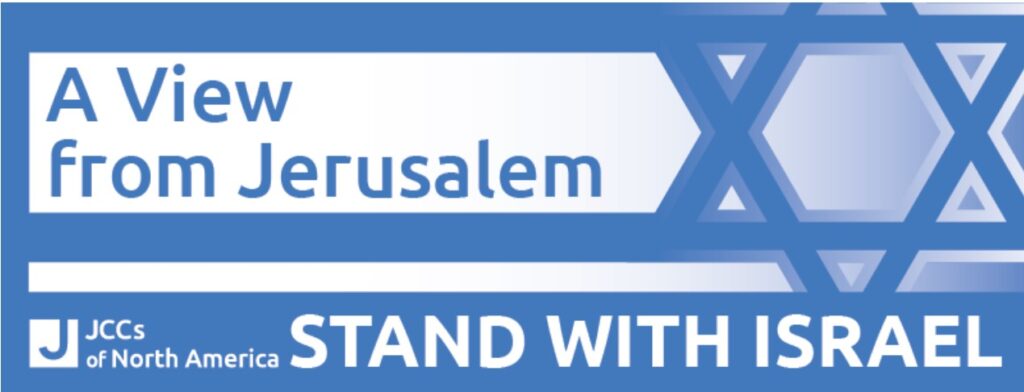We are shocked and saddened by the horrific actions Hamas has taken toward Israel and its citizens. Let’s stand together as a community and support Israel.

Leah Garber is a senior vice president of JCC Association of North America and director of its Center for Israel Engagement in Jerusalem. Click the button below to read her latest update from Israel.
Listen to the recording of a local radio interview with Israel’s Consul General, Livia Link-Raviv. Broadcast from Tuesday, December 19, 2023.
A Message from the JCC Board President and CEO
Not since the Holocaust have so many Jews been murdered in one day. There is no moral equivalent between Israel, a country fighting for its existential right to exist, and Hamas terrorists, whose barbaric acts are proof of their stated desire, not to achieve self-determination for Palestinians or peace in Gaza, but to destroy the State of Israel and the Jewish people.
Most people, regardless of background, condemn the evil Hamas perpetrated over the weekend while Jews were celebrating the holy day of Simchat Torah. However, there are those whose response normalizes antisemitism–American activists celebrating the loss of Jewish life in major cities across the country. Politicians and leaders refusing to unequivocally condemn Hamas’ brutal acts. 31 student organizations at Harvard and more at Berkeley blaming Israel for the atrocities unleashed by Hamas. The United Nations rejecting calls to denounce the terrorism. And some media outlets, declining to call Hamas “terrorists,” opting instead to use gentler terms like “soldiers” or “fighters.” Soldiers and fighters do not brutalize innocent women, children, and babies like Hamas did.
“Never Again” became the rallying cry for the Jewish people in the aftermath of the Holocaust and led to the creation of Israel. “Never Again” signifies the collective determination to ensure that the systematic persecution and murder of Jews would end with the Holocaust. As we mourn the lives lost and irrevocably changed in the aftermath of Hamas’ terrorist attack over the weekend–Israeli lives, Palestinian lives, American lives, and countless of other lives lost and forever changed–let us stand with and for the people of Israel and exercise the courage to clearly denounce terrorism and hatred wherever and in whatever form it occurs. It is only by standing together against violence and hatred that we can build a society where the cries of “Never Again” echo not just as a reminder of the past, but as a beacon guiding us toward a future where all our children, regardless of background, can live without fear.
Am Israel Chai
Nicole Werkmeister, President Shelly Prant, JCC CEO

